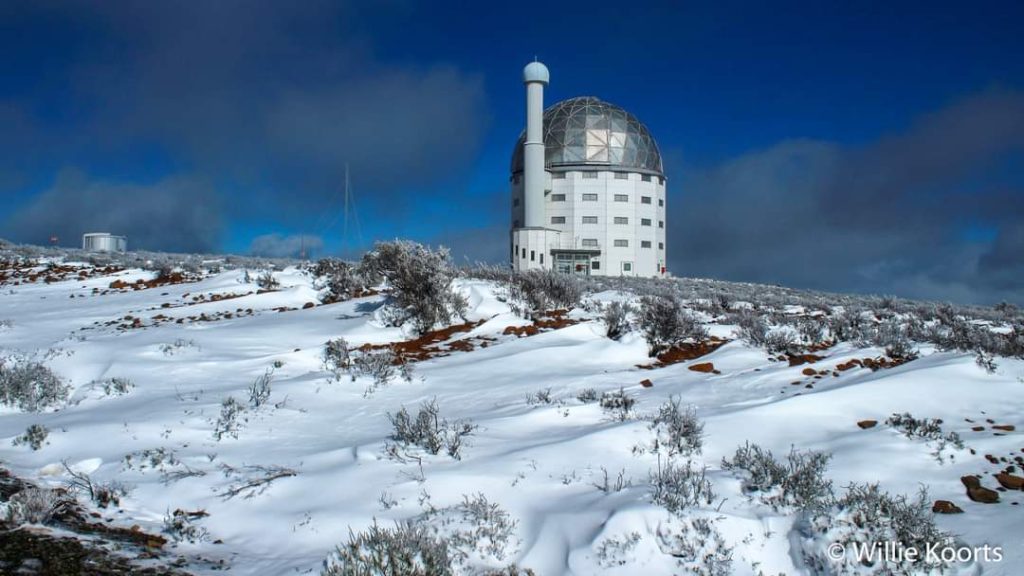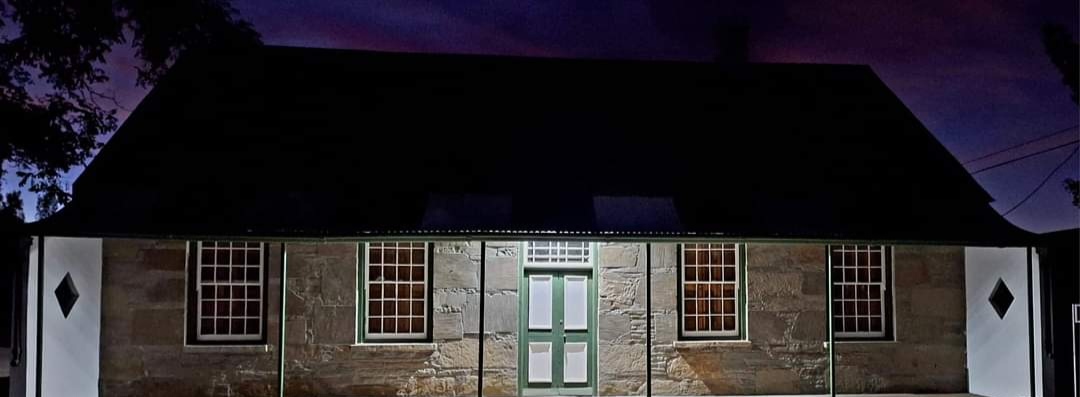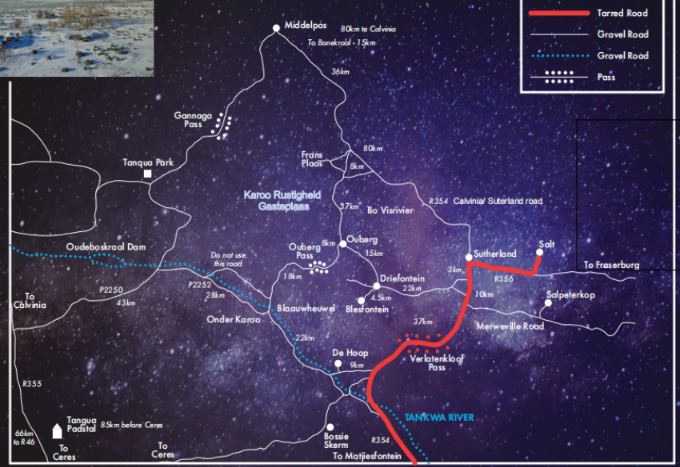Restaurants, Shops & Activities

Boorgat Restaurant & Bar
Boorgat Restaurant offers scrumptious farm style food, with a bit of a twist. Try our authentic specialities namely Lamb Curry, Lamb Shanks and Roosterkoek as well as the old time favourites such as Ribs, Steaks, Pizzas and many more, made and filled with Real Karoo flavours.

Sutherland Hotel Restaurant & Die Rooikat bar
Sutherland Hotel is situated in the centre of town.
OK Foods & OK Liquors is on the main street (Piet Retief Street).

Blue Moon Restaurant
The Blue Moon is ideally situated for eating out in the heart of Sutherland and provides a relaxed, friendly atmosphere. Our modern
South African cuisine is developed by our Chefs following authentic recipes handed down from generation to generation. Innovative and highly trained, they constantly strive to improve techniques to meet the high standards we set for our clients. Our Menu offers a truly delicious selection of modern and traditional South African dishes.

SALT
The South African Astronomical Observatory (SAAO) is home to SALT, the largest single optical telescope in the Southern Hemisphere.
Inspired by the Hobby-Eberly Telescope in Texas, it features an 11-meter-wide primary hexagonal mirror made up of 91 individual hexagonal mirrors, each measuring one meter across and weighing about 100 kg. This remarkable instrument can detect the light of a single candle on the moon, but its primary purpose is to explore deep space—observing the birth and death of planets, gazing into distant galaxies, and recording the scale and age of stars, galaxies, and quasars billions of light-years away.
Places of Interest
Sutherland is a place where architectural heritage and cultural inspiration converge. Early pioneers used the region’s distinctive grey stone to craft everything from dry-packed stone walls to grand structures built with large, dressed blocks set in pointed mortar, leaving behind a legacy of rugged beauty. This same stark landscape has long inspired writers and artists, including notable Afrikaans poets from the Von Moltke Louw and Esterhuyse families, such as DC Esterhuyse and NP van Wyk Louw. The serenity and remoteness of the Karoo continue to shape the creative spirit of Sutherland.

Stargazing with Jurg
A stargazing session presented by Jurg Wagener can be done almost every night throughout the year. Remember to “dress for the occasion”. Evenings are cool to cold so in order to enjoy the program, being dressed warmly is essential. Each show last for approximately 2 hours.
Sterland has a new Restaurant as well – Sterland Sneeu – 09:00 – 18:00

Tjol se Gat
The building was the old toll house (a small house by a toll gate where money was collected from road users) which was in use until December 1907.
Today it is a small pub in Verlatenkloof ,20km before the town of Sutherland.
PLEASE BE WISE, DON’T DRINK AND DRIVE.

Hokaai Padstal
Hokaai Padstal in Verlatekloof, 23km before Sutherland, is a must-stop for delicious Karoo products! They offer homemade pies, biltong, droëwors, jams, rusks, and cookies from the Sutherland district. You'll also find locally made products like:
- Sheepskin and wool boots
- Soap and bath products
- Pistachios
- Spices
- Raw honey
The Louw Huis Museum
If you’re interested in Afrikaans literature, visit the birthplace of NP van Wyk Louw and his brother WEG Louw, both renowned Afrikaans poets. NP, born on 11 June 1906, saw Afrikaans as a bridge between Europe and Africa. He passed away on 18 June 1970 at age 64. The Louw Huis Museum showcases artefacts, letters, and photographs of Sutherland’s famous families, the Louws and Esterhuyses, including poets DC Esterhuyse, NP van Wyk Louw, and WEG Louw. It also honors locals like civil engineer Sir Henry Olivier. Currently under construction, the museum will reopen soon.
Explore Nature and the Stars in Sutherland
Rogge Cloof Bio-nature Game Reserve offers unforgettable experiences, including cheetah and game drives, wine and gin tastings, and guided hikes of the Salpeterkop Volcano, the last active volcano in Africa. Book your visit at Rogge Cloof at their reception please. For stargazers, the South African Astronomical Observatory provides night tours using 14” and 16” telescopes, with optimal viewing during low moon phases. Day tours showcase the impressive Southern African Large Telescope (SALT). Online bookings are essential for both activities.

Paulsen Butchers
Local Butcher in Sutherland – Karoo Lamb, Biltong & Droewors!
Stop by for fresh, organic Karoo lamb, available as a whole, half, or custom cuts. Don’t forget our famous biltong, droewors, and homemade sausage – perfect for snacks or gifts!
Contact: 023 571 1490
Hours: Mon-Fri: 08:00 – 17:00
Sat: 08:00 – 13:00

Die Ou Meule
Die Ou Meule – it’s a historic building, where the first old grain mill were, and it is still to be seen at the Restaurant. Chrisna will serve traditional karoo home made meals and burgers/light lunches but the Bobotie, skaapkop, lamb chank etc, is her speciality.
Business Hours: Tuesdays – Saturdays: 13:00 – 22:00
Sundays & Mondays: only for bookings

Sutherland Landbou Kooperasie Petrol Station
We’re open 7 days a week, from 07:00 to 19:00, providing reliable fuel and services to keep you on the move!

Sutherland Planetarium
Your one stop space shop : The Universe is just a click away!
Sutherland Planetarium is the only privately owned digital planetarium in South Africa. The 30-seater Planetarium is located on the main road in the centre of town and is open 7 days a week showcasing a wide range of full-dome films for the enjoyment of the whole family. The Planetarium also has a new Astro Amphitheatre for evening star gazing shows. Bring your smart phone to do your own Astro Photography
Planetarium shows are daily from 09h00 – 17h00 every hour on the hour. The rate is R100 for adults and R60 for children under 13.
Stargazing at the Astro Amphitheatre from 20h00 and the rate is R150 per person

Fossils @ Sterland
Embark on a fossil hunt and deepen your understanding of the Karoo's fascinating palaeontology, from Sutherland to Fraserburg.
Begin with Jaco in Sutherland, where you can explore our small geological and palaeontological exhibition featuring fossils and geological samples from the Beaufort Group.
Discover the ancient floodplain environment of the Permian era, around 260 million years ago, and learn about the evolution of the mammal-like reptiles that once roamed this region.

Sutherland on Foot
Explore Sutherland on foot with tour guide Amanda! Wear comfy shoes and bring your camera to capture the beautiful grey stone houses. Don't miss the historic Dutch Reformed Church, built in 1899, which once served as a fort during the Anglo Boer War.
The Louw Museum is under renovation, but Dr. Henry Olivier’s residence, built in 1905, is also worth a visit (viewings dependent on guest occupancy).
Tour Times:
Monday to Saturday: 9am & 11am
No tours on Sundays.
Book ahead: 064 657 0693
Self-Drive Excursions Around Sutherland / Roggeveld Area
Just 20km from Karoo Rustigheid Guest Farm, Ouberg Pass offers a stunning circular drive linking the Roggeveld Plateau to Tankwa Karoo National Park. The drive descends the Roggeveld Mountains, providing breathtaking views of the Cederberg Mountains. At the bottom, turn towards Middelpos and ascend Gannaga Pass, with its beautiful 19th-century stonework. Stop at Gannaga Lodge for lunch before continuing to Middelpos, and then head back to Sutherland via the R354.
For another full-day scenic drive, explore the Rooiberg and Komsberg Passes between Sutherland and Laingsburg, offering incredible views and Karoo tranquillity.
The beginning of Sutherland in the Roggeveld
Sutherland lies at the heart of the Roggeveld region, named for the naturally occurring wild rye grass (Secale Africanum). Early scouts recognized its potential for sheep farming, prompting pioneer farmers to traverse the awe-inspiring landscape and formidable mountain ranges to settle here.
In the 1700s and early 1800s, after the arrival of the first white pioneers, the Dutch East India Company provided capital to establish farms across the vast land. These farms, bearing Dutch names like Uitkyk, De Guns Fonteyn, Klipfontein, De Knolle Fonteyn (Kanolfontein), De Jakkalsfontein, De List, and Cylenberg, are now part of the region’s history. Despite conflicts with the local KhoiSan populations, the settlers remained.
They were associated with the Worcester district, overseen in matters of religious welfare by Dominee Henry Sutherland. Eventually, the Dutch Reformed Church purchased De List farm to serve the local community, holding its first advisory meeting in 1855 as the “Middel en Kleinroggeveldsche Gemeente” (Middle and Small Roggeveld Congregation).
That year marked significant progress for the community. Previously under Fraserburg’s jurisdiction, they built a large stone jail, planned a hospital, and began steps toward self-governance. In 1857, the Worcester Municipal Council directed that De List farm be divided into 50 properties for sale, creating a church town named after Dominee Sutherland.
In 1858, the cornerstone of the first church was laid, and by November, the first properties were auctioned, officially marking Sutherland on the map.


